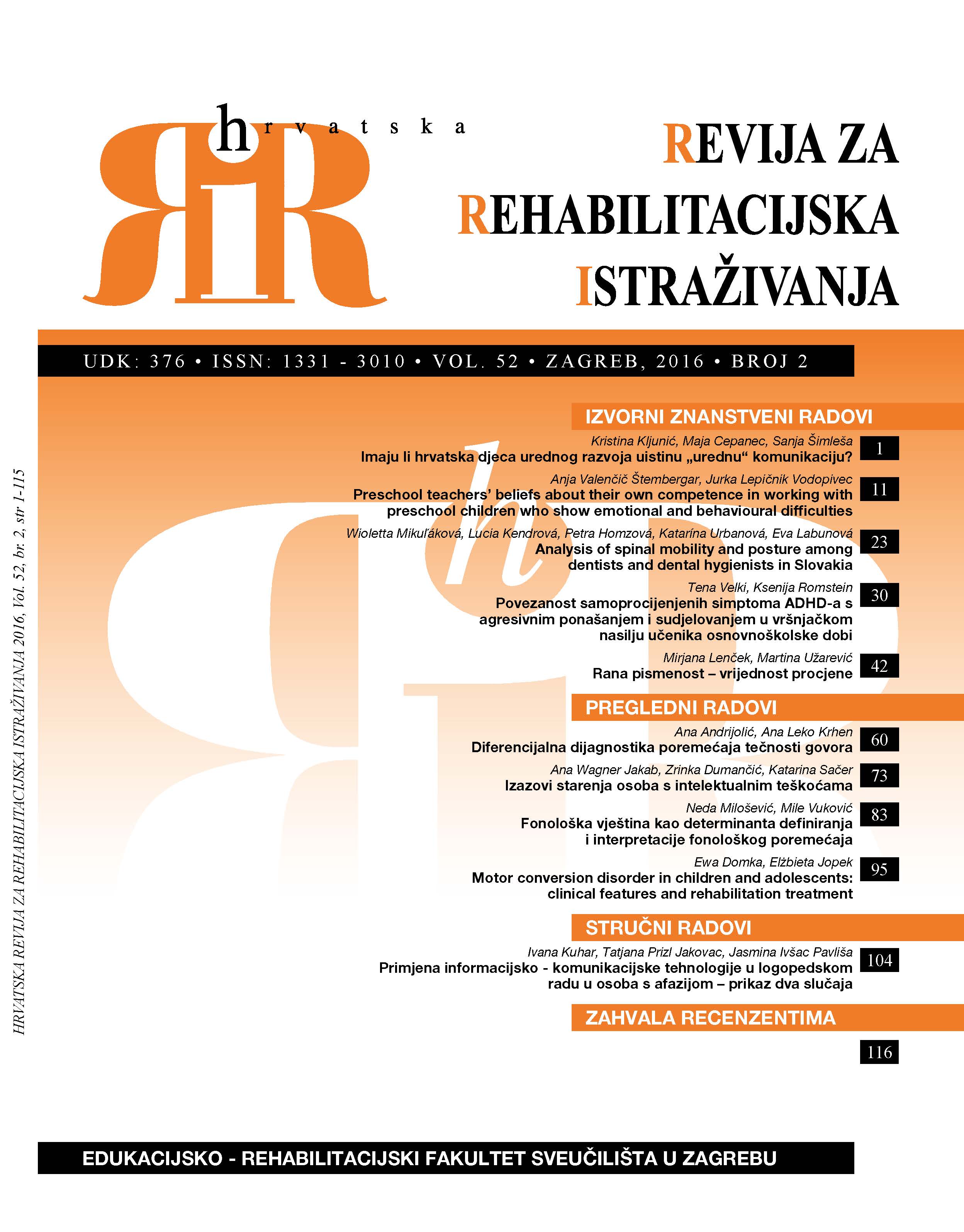Diferencijalna dijagnostika poremećaja tečnosti govora
Differential diagnosis of fluency disorders
Author(s): Ana Andrijolić, Ana Leko KrhenSubject(s): Social Sciences, Health and medicine and law
Published by: Sveučilište u Zagrebu, Edukacijsko-rehabilitacijski fakultet
Keywords: differential diagnosis; fluency disorders; developmental disorders; acquired disorders
Summary/Abstract: Differential diagnosis refers to the identification of a disorder and its differentiation from other disorders with common symptoms. In the field of fluency disorders, disfluencies are a common symptom that can be part of different developmental and acquired disorders such as developmental stuttering, neurogenic stuttering, psychogenic stuttering, cluttering, aphasia, dysarthria, apraxia, palilalia, Parkinson disease and different genetic syndromes, specifically Down syndrom, Fragile X syndrome, Prader-Willi syndrome, Tourette syndrome, Neurofibromatosis type I, and Turner syndrome. In this paper, recent literature related to the differential diagnosis of listed fluency disorders is reviewed. Their general and specific symptomatology is described, and differential diagnostic criteria are highlighted. Because differential diagnosis of fluency disorders is still a challenge for speech and language therapists, this paper provides guidelines for clinical decision making. Accurate diagnosis is necessary to ensure the optimal therapy plan because different strategies are appropriate for different disorders. There are various limitations of research studies in this field, and many of them consist of case studies. Further systematic studies on large groups, with detailed descriptions of speech and non-speech characteristics across various types of speech tasks, are necessary in order to obtain a better understanding of different fluency disorders.
Journal: Hrvatska revija za rehabilitacijska istraživanja
- Issue Year: 52/2016
- Issue No: 2
- Page Range: 60-72
- Page Count: 13
- Language: Croatian

